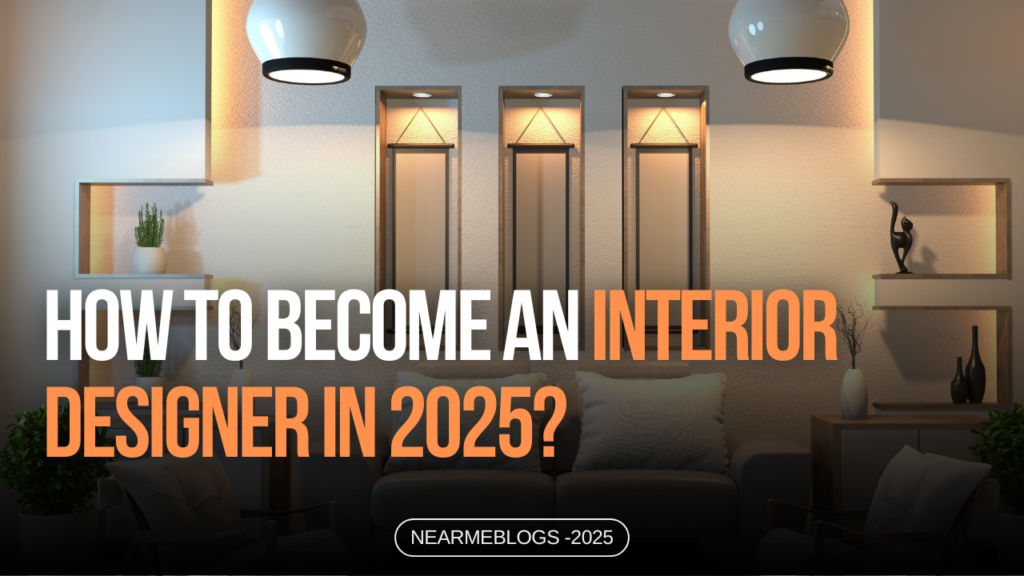In a rapidly evolving design industry, becoming an interior designer in 2025 requires more than just a keen eye for aesthetics. It demands strategic learning, professional certifications, digital savvy, and a strong network. This detailed guide provides everything you need to know about launching a successful career in interior design in 2025.
What Does an Interior Designer Do?
Interior designers are professionals who plan, design, and coordinate the enhancement of interior spaces to create aesthetically pleasing and functional environments. They work across various sectors including residential, commercial, hospitality, retail, and institutional spaces.
Key responsibilities include:
- Understanding client requirements and preferences
- Creating design concepts and space plans
- Selecting materials, colors, furniture, and lighting
- Using design software like AutoCAD, SketchUp, or Revit
- Collaborating with architects, contractors, and vendors
- Managing budgets, timelines, and project execution

Why Choose Interior Design as a Career in 2025?
The interior design industry is projected to grow significantly due to rising urbanization, increased spending on lifestyle, and the booming real estate and renovation markets.
Top Reasons to Choose Interior Design:
- High-income potential with freelancing and consulting options
- Demand across residential, commercial, and luxury sectors
- Creative and fulfilling profession with tangible impact
- Remote and hybrid opportunities post-COVID
- Increased recognition due to social media visibility
Educational Pathways to Become an Interior Designer in 2025
1. Enroll in a Recognized Interior Design Course
To build a strong foundation, opt for a degree or diploma program from an accredited institute. Some of the top qualifications include:
- Bachelor of Interior Design (B.Des)
- Bachelor of Fine Arts (BFA) in Interior Design
- Diploma in Interior Design
- Postgraduate Diploma in Interior Space Design
2. Explore Online Certification Programs
For those shifting careers or seeking flexible learning, top online platforms offer professional certification programs in 2025:
- Coursera – Interior Design Specializations
- Udemy – Interior Design Basics to Advanced
- Skillshare – Hands-on design project courses
- LinkedIn Learning – Software and portfolio development
Learn the Essential Skills Every Interior Designer Needs
To stand out as an interior designer, you must master both technical and soft skills. These include:
Technical Skills:
- Space planning & ergonomics
- Lighting and color theory
- Sustainable and green design
- Proficiency in design software (AutoCAD, SketchUp, Revit, 3ds Max)
- Drafting and 3D rendering
Soft Skills:
- Communication and presentation skills
- Problem-solving ability
- Project management
- Client relationship building
- Time management
Build an Impressive Interior Design Portfolio
A professional design portfolio is your most powerful tool. It showcases your creativity, versatility, and technical capabilities. Make sure to:
- Include sketches, 3D models, and real-world projects
- Highlight before-and-after shots
- Describe your design rationale
- Present projects for various spaces: kitchens, offices, living rooms, cafes, etc.
- Create a digital version hosted on your personal website or Behance
Get Certified and Licensed (If Required)
Depending on the country or state, certification and licensing may be necessary to practice as an interior designer. In India, a license is not mandatory, but certification enhances credibility.
Top Certifications in 2025:
- National Council for Interior Design Qualification (NCIDQ) – USA
- Certified Interior Designer (CID) – USA & Canada
- IIID Membership (Institute of Indian Interior Designers) – India
- LEED Certification – For sustainable design professionals
- AND Certification – For sustainable design professionals
Master Interior Design Software Tools
Digital proficiency is essential in 2025. Learn to use these tools to increase project accuracy and professionalism:
- AutoCAD – For drafting 2D plans
- SketchUp – For 3D modeling
- Revit – For BIM (Building Information Modeling)
- Photoshop – For design mockups and presentations
- Lumion / V-Ray – For high-end 3D rendering
Gain Practical Experience Through Internships or Freelance Work
Real-world exposure is irreplaceable. Work under a senior designer, collaborate on home renovations, or freelance online.
Platforms to Find Interior Design Gigs:
- Upwork
- Fiverr
- Houzz
- Freelancer
Join an Interior Design Community
In 2025, community is currency. Join platforms and networks that connect interior designers with projects, vendors, and peers.
- India’s Largest Interior Community (collaborations, vendor access, client leads)
- Facebook and LinkedIn groups for Interior Designers
- Local professional bodies and online forums
Networking helps you stay updated, get referrals, and find mentorship.
Market Yourself as an Interior Designer in 2025
No matter how talented you are, clients need to find you. Build a personal brand using:
1. Social Media
- Share reels, before-after designs, and client testimonials
- Use Instagram, Pinterest, and LinkedIn actively
2. Website & SEO
- Create a professional website with SEO-rich blog content
- Showcase your portfolio and contact details
3. Google My Business
- List your services with images, reviews, and location tags
- Helps with local SEO and Google Maps visibility
4. WhatsApp Business
- Automate queries, share catalogs, and run promotions
Stay Updated With Trends and Innovations
The interior industry is constantly evolving. Stay current with:
- Smart homes and automation
- Sustainable and eco-friendly materials
- Minimalist and functional design
- Biophilic and wellness-oriented spaces
- Virtual reality walkthroughs for clients
Final Thoughts
Becoming an interior designer in 2025 is not just about artistic flair. It requires commitment to continuous learning, marketing your brand, building relationships, and mastering tools that drive innovation. With the right steps, you can turn your passion for design into a lucrative and impactful career.






















